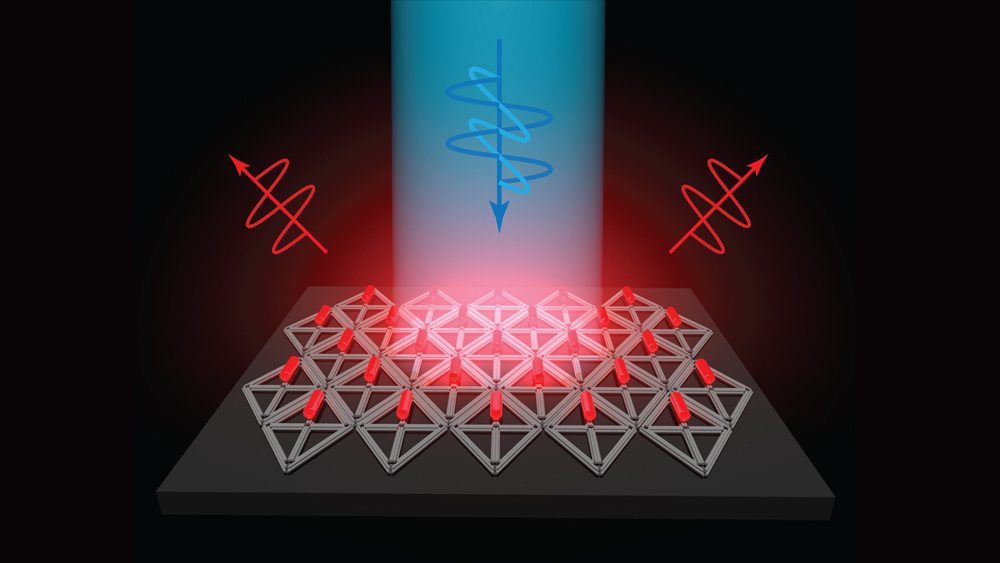In the realm of technological advancements, MIT engineers have unveiled a groundbreaking approach that could potentially transform the world of visual displays. They’ve ingeniously devised a method to create arrays of quantum rods, offering enhanced capabilities to flat-screen TVs and virtual reality devices. The innovation lies in the assembly of these arrays, achieved by harnessing the unique properties of DNA scaffolding.
Unlocking Quantum Potential; Quantum dots have already taken the market by storm, elevating the quality of flat-screen TVs. However, quantum rods, their elongated counterparts, hold the potential to elevate visual experiences even further. These quantum rods possess the remarkable ability to control both the polarization and color of light. As a result, they pave the way for generating captivating 3D images in virtual reality environments.
A DNA-Powered Breakthrough; The breakthrough arises from the ingenious marriage of quantum rods and patterned DNA scaffolds. MIT engineers have pioneered a novel technique to assemble arrays of quantum rods with unparalleled precision. By strategically depositing quantum rods onto DNA scaffolds, researchers achieve a heightened level of control over their orientation. This orientation control plays a pivotal role in determining the polarization of the emitted light, thus enhancing the depth and realism of virtual scenes.
The Challenge of Alignment; One of the primary challenges faced in working with quantum rods is achieving alignment at the nanoscale. Mark Bathe, an MIT professor of biological engineering, emphasizes the significance of aligning these rods uniformly to yield consistent light interaction and polarization properties. Through this innovative assembly method, the alignment puzzle is ingeniously solved.
DNA Origami: Building at the Nanoscale; For over a decade, the scientific community, including MIT’s Mark Bathe, has delved into the intricate realm of DNA origami—designing nanoscale structures using DNA as the building material. This powerful technique enables the creation of structures with diverse applications, from drug delivery to light-harvesting materials.
The Power of Nanoscale Design; Bathe’s team has pioneered computational methods that facilitate the creation of specific nanoscale shapes through DNA self-assembly. This revolutionary approach empowers scientists to construct tailored DNA-based materials, even incorporating quantum dots into the mix. Previous work paved the way for attaching quantum dots using DNA scaffolds, a stepping stone toward the current breakthrough.
The Diamond DNA Connection; In collaboration with Macfarlane’s lab, the challenge of assembling quantum rods into 2D arrays was tackled head-on. Unlike quantum dots, which could be relatively easily aligned, quantum rods demanded a more intricate approach. The solution involved attaching quantum rods to diamond-shaped DNA origami structures. These structures maintain the crucial distance required to prevent interference between neighboring rods’ light-emitting activities.
Velcro-Like Bonding; The technique employs DNA strands, akin to Velcro, to secure the quantum rods onto the DNA origami template. This thin DNA film coats a silicate surface, and its self-assembly through overhanging strands ensures a secure bond between the rods and the template. This ingenious method significantly reduces manufacturing time, setting the stage for potential commercial applications.
A Glimpse into the Future; The potential of this innovation extends beyond microLEDs and virtual reality. Researchers envision wafer-scale surfaces with intricate patterns, offering scalability to device-scale quantum rod arrangements. The controllable sizing, shaping, and positioning of these arrays open doors to diverse electronics applications, paving the way for a new wave of technological possibilities.
Towards a Sustainable Bioeconomy; The beauty of this technique lies in its sustainable foundation. DNA, a biologically-produced molecule, aligns with the emerging U.S. bioeconomy, offering scalability and environmental responsibility. The research is supported by various esteemed institutions, highlighting the collaborative effort behind this transformative breakthrough.
MIT engineers have orchestrated an awe-inspiring fusion of quantum technology and DNA origami, propelling the boundaries of visual technology. As quantum rod arrays inch closer to commercial reality, the future of TVs, augmented reality, and beyond looks brighter than ever.
What are quantum rods? Quantum rods are elongated versions of quantum dots that have the unique ability to control light polarization and color, making them ideal for enhancing visual displays like TVs and virtual reality devices.
How do MIT engineers assemble quantum rod arrays? MIT engineers use folded DNA scaffolds to precisely assemble quantum rod arrays. By strategically depositing quantum rods onto DNA scaffolds, they control the rods’ orientation, improving light polarization and depth perception.
What challenges do quantum rods pose in terms of alignment? Achieving nanoscale alignment of quantum rods is challenging. Uniform alignment is crucial for consistent light interaction and polarization. MIT’s approach tackles this alignment challenge effectively.
What is DNA origami, and how is it used in this research? DNA origami is a technique where DNA is used to construct nanoscale structures. In this research, DNA origami serves as a scaffold for assembling quantum rods, allowing precise alignment and control.











